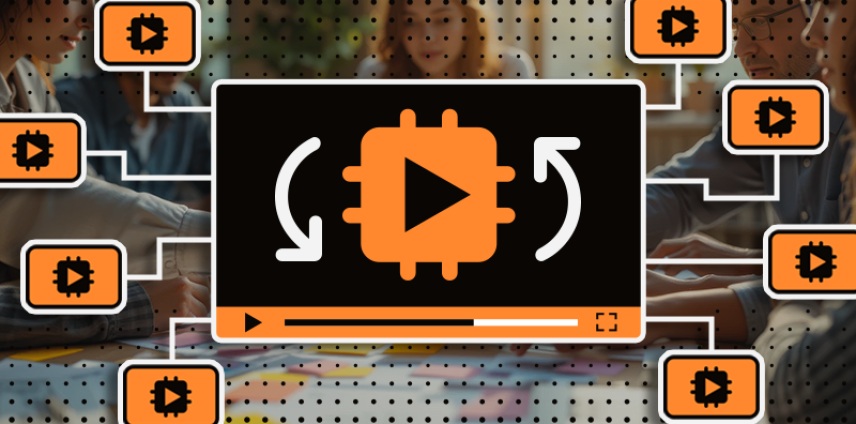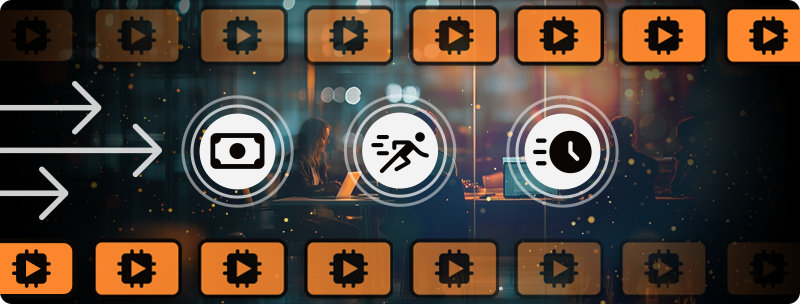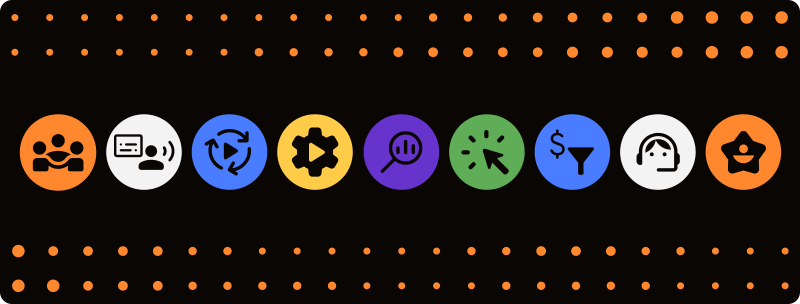9 strategies to maximize ROI using AI video content

Table of Contents

Why businesses are investing strongly in AI video content
- Personalization gets conversions: AI makes it easy to create personalized marketing videos at scale. And since they get much higher click-to-open rates than the generic ones, that is exactly why businesses are going all in.
- Cuts production costs in half (or more): Businesses love AI video because it turns a five-figure problem into a three-figure solution. For any brand running constant campaigns, those savings add up fast.
- Speed matters more than ever: Trends come and go in hours. Traditional production takes weeks, and by then the moment is dead. With AI, you can have a polished video ready the same day. That agility is why businesses are investing heavily in it.
- Data & ROI tracking are built in: AI video tools track everything: where people stop watching, which edits drive clicks, which audiences buy. That means brands can invest more in winners and cut losses quickly.

9 proven strategies to boost ROI with AI video content

1. Personalize videos with AI for different audience segments
- Segment your audience first – age, location, past purchases, interests, or even browsing behavior.
- Create one core video (e.g., a product demo) and use AI tools to instantly swap elements, such as text overlays, product colors, backgrounds, or even the spokesperson.
- Push different versions to each segment. For example:
- Track results by segment. Views are great, but look at conversions. AI analytics tools can tell you exactly which version drove the sale.

2. Use AI-powered voiceovers & subtitles
- Replace robotic text-to-speech with natural-sounding AI voices.
- Translate the video into multiple languages, so it works in 5 markets instead of just one.
- Test tone: casual for social clips, authoritative for product demos.
- Auto-generate captions for every video. Most people watch muted, especially on TikTok and LinkedIn.
- Translate captions so global audiences instantly understand.
- Style them – bold your offer or CTA so it stands out while people skim.

3. Repurpose existing content into AI videos
- Identify top-performing content (Google Analytics, podcast downloads, blog traffic). Start with what people already engage with.
- Feed it into AI video tools that can generate scripts and create visual explainers.
- Turn one piece into many formats:
- Add a call-to-action that matches the channel. For example, LinkedIn clip → “Download the full report,” TikTok clip → “Shop now.”

4. Automate video production for scale
- Batch your inputs. Upload multiple product shots or campaign themes into an AI platform. You can even start with a few video prompts inside the AI platform.
- Generate variations automatically. AI can produce different intros, calls-to-action, or aspect ratios (square for Instagram, vertical for TikTok, horizontal for YouTube).
- Create templates. Set your brand’s fonts and colors so every video looks consistent, no matter how many you make.
- Schedule and publish directly. Many AI tools integrate with social platforms, so you don’t have to manually upload 20 videos across five channels.

5. Leverage predictive analytics for video campaigns
- Upload past campaign data (CTR, watch time, conversions) into an AI platform. It will flag patterns humans miss, like “30-second clips work 40% better for younger viewers.”
- Test variations upfront. Instead of A/B testing after you have spent $5K on ads, AI can simulate how different scripts or video lengths are predicted to perform.
- Forecast results. You will literally see output like: “Version C has a 75% higher probability of converting than Version A.” That lets you cut losers early.
- Spend smarter. Put your ad dollars only behind the videos that the model predicts will give the best return.

6. Improve video SEO with AI tagging & transcriptions
- Auto-generate transcriptions. Publish the transcript as a blog or under the video. This instantly gives search engines text to crawl.
- Tag keywords smartly. AI tools analyze your video script and suggest high-volume keywords that people are actually searching for.
- Rich snippets. By pairing transcripts with timestamps (“At 1:12, see the feature demo”), you can rank for those micro-moments in search.
- Generate captions in different languages. Not only does this help viewers, but it also lets you rank in multiple regions.

7. Integrate AI video into sales funnels
- Top of Funnel (Awareness): Create AI-powered short videos (15–30 seconds) that are catchy and easy to share.
- Middle of Funnel (Consideration): Use AI to build product explainers or comparison videos. Example: “Here’s how we stack against [competitor].” Keep them customer-focused, not feature dumps.
- Bottom of Funnel (Decision): AI videos that answer objections. “What is included in the plan?” “How do I cancel?” Make them go straight to the point with a strong CTA.
- Post-Funnel: Personalized AI thank-you or onboarding videos that confirm the customer made the right decision.

8. Use AI to create videos for customer support & onboarding
- Turn FAQs into videos. Look at your top 20 support tickets. Make each one a short AI video – “Reset your password,” “Update billing info,” “Set up integrations.”
- Build onboarding sequences. Instead of PDFs or long calls, create AI video playlists that walk new users step by step.
- Add videos to chatbots. When someone asks a question in live chat, the bot drops a 1-minute video that shows the solution.
- Go multilingual automatically. AI voiceovers and subtitles make support videos accessible worldwide without requiring multiple teams.

9. Blend AI video with influencer or user-generated content
- Clean up shaky or noisy original videos with AI video editors so they look sharp but still “real.”
- Take one influencer’s 60-second testimonial and spin out platform-ready complete videos: TikTok short, YouTube widescreen, Insta story. All without pestering them to reshoot.
- Auto-translate their voice into 5 languages with AI lip-sync.
- Drop consistent branded intros/outros so your 10 different influencers don’t look like 10 different campaigns.

Conclusion

FAQ
Because AI makes video creation faster, cheaper, and more efficient. Instead of spending weeks on production, brands can now create polished videos in hours — perfect for social media, campaigns, and internal communication.
People scroll faster than ever. AI videos adapt automatically to each audience, platform, and trend — with personalized messaging, subtitles, and the right tone. That’s how your brand stays visible and relevant.
Absolutely. AI replaces expensive filming crews, voice actors, and post-production work. Many companies report cutting their costs by 50% or more while keeping quality high.
Use it strategically across your funnel. Short awareness clips grab attention, mid-funnel explainers build trust, and personalized onboarding videos boost retention. Each stage should have a clear goal and message.
Successful brands use AI to personalize content, analyze data, and repurpose existing assets. It’s not about producing more videos — it’s about producing smarter ones that convert better and drive measurable results.


